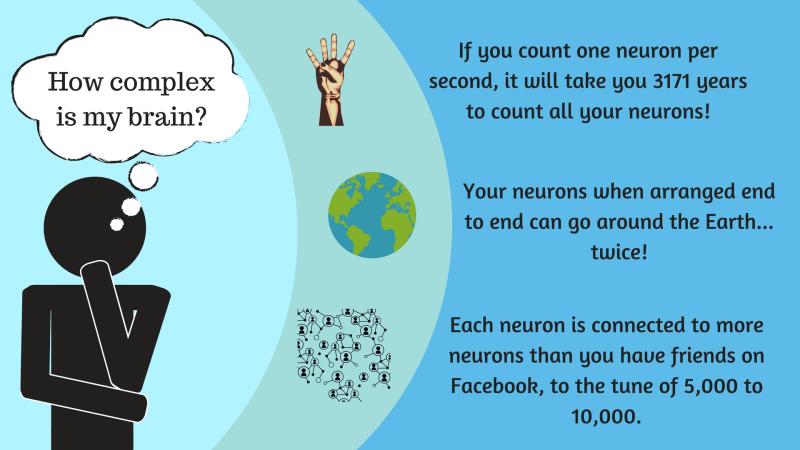
The human brain is an extremely complex network of gazillion of nerve cells. This complexity of the brain serves to its advantage. The human brain can store more information than a supercomputer in the tiny space between our ears. Our brain can perform complicated calculations like image recognition in a split second, which the best available computers still aspire for. On the other hand, we don’t stand a chance against a basic calculator to perform long mathematical calculations. Plus, unlike a super computer, the brain is super efficient in energy usage, though it takes up a substantial amount of glucose. Understanding the brain is still a far cry, but great leaps have been made in the recent years to explore the inner mysteries of this complex structure.
A journey into the complexity of the brain will astound us. This tiny lump of one and half kilograms houses around 100 billion nerve neurons. Such is the level of complexity that if you start counting one cell per second, it will take you about 3,171 years just to count 100 billion neurons. If you happen to align these neurons end to end along with all its projections then they could be wrapped around the earth twice. These neurons are not isolated beasts. They do complex networking with fellow neurons just as we connect with others through social networking sites like Facebook and Twitter. Each neuron is physically connected to around 5000-10000 other neurons through contact points called synapses where all neuronal gossiping and transfer of information take place.
What do we know about the inner workings of the human brain? The transfer of information from one neuron to another forms the basis of brain function. There are chemicals (language of the neuron) involved which help in transfer of this information. The interconnected neurons form closely knit societies called circuits which add another level of complexity. These circuits give functional identity to the brain. For example there are specific circuits for memory, love, vision, language, etc. Any phenomenon which can potentially disrupt this information transfer within a circuit or between circuits will cause specific diseases of the brain such as depression, autism, Alzheimer’s disease, Parkinson’s disease, etc.
Neuroscientists specialize in the study of the brain and the nervous system. With the advent of various non-invasive imaging techniques like the MRI, PET, etc., the human brain has become more accessible. There is a compelling need to understand the brain and the basic principles which govern its functions. There lies the daunting task of deciphering the brain’s commands for all the diverse and complex functions it performs. There is a constant strive for a deeper understanding of how the brain’s 100 billion nerve cells are born, grow, connect and reconnect with time to form functional circuits. The human brain exploring itself is one the most fascinating aspect of this era.





